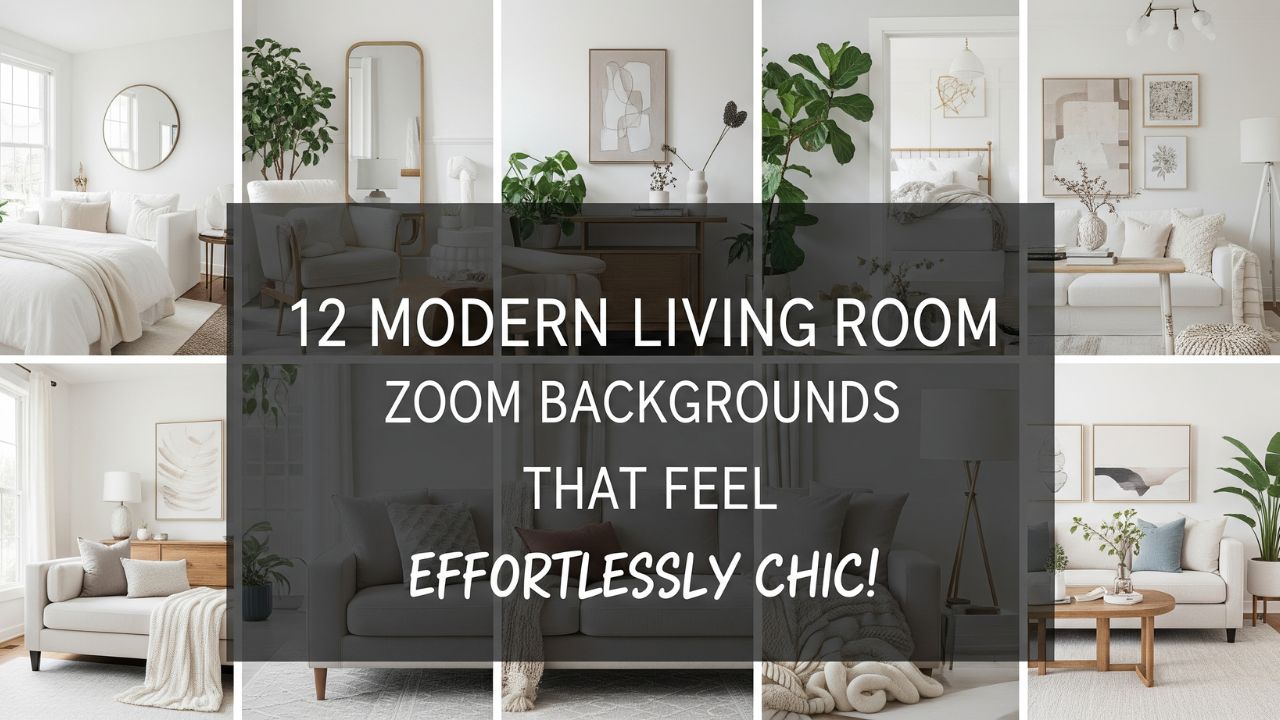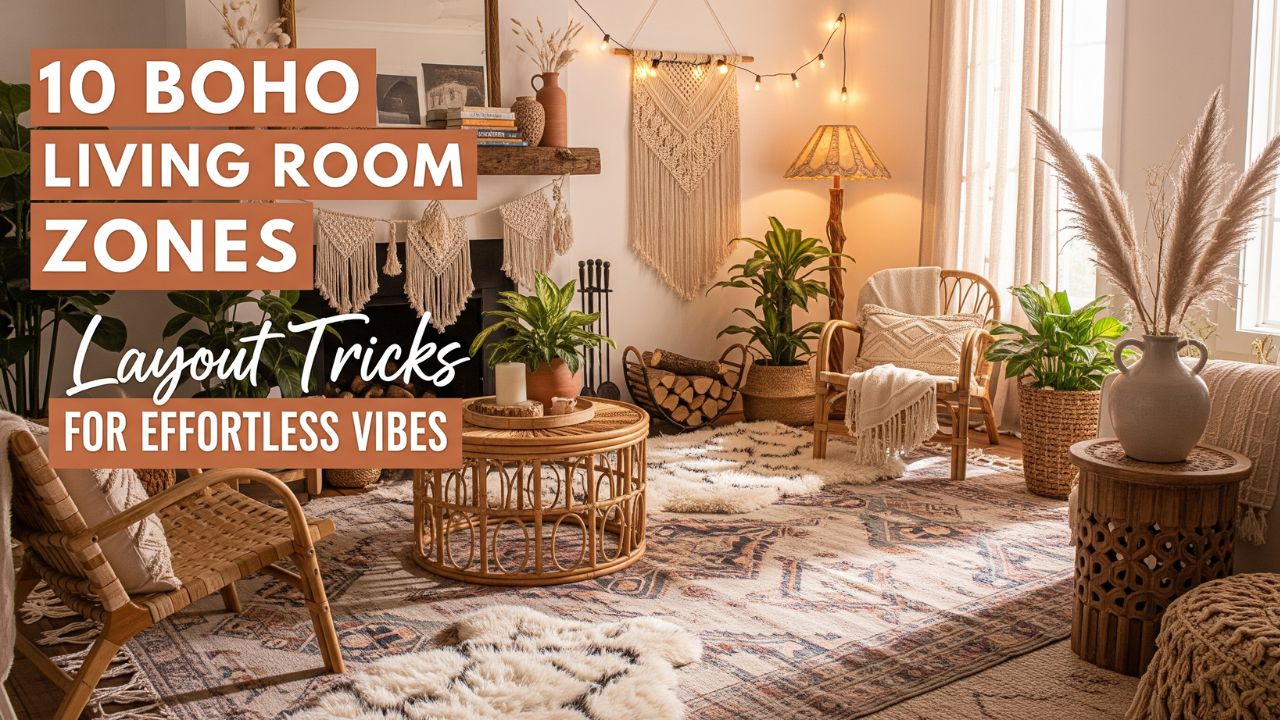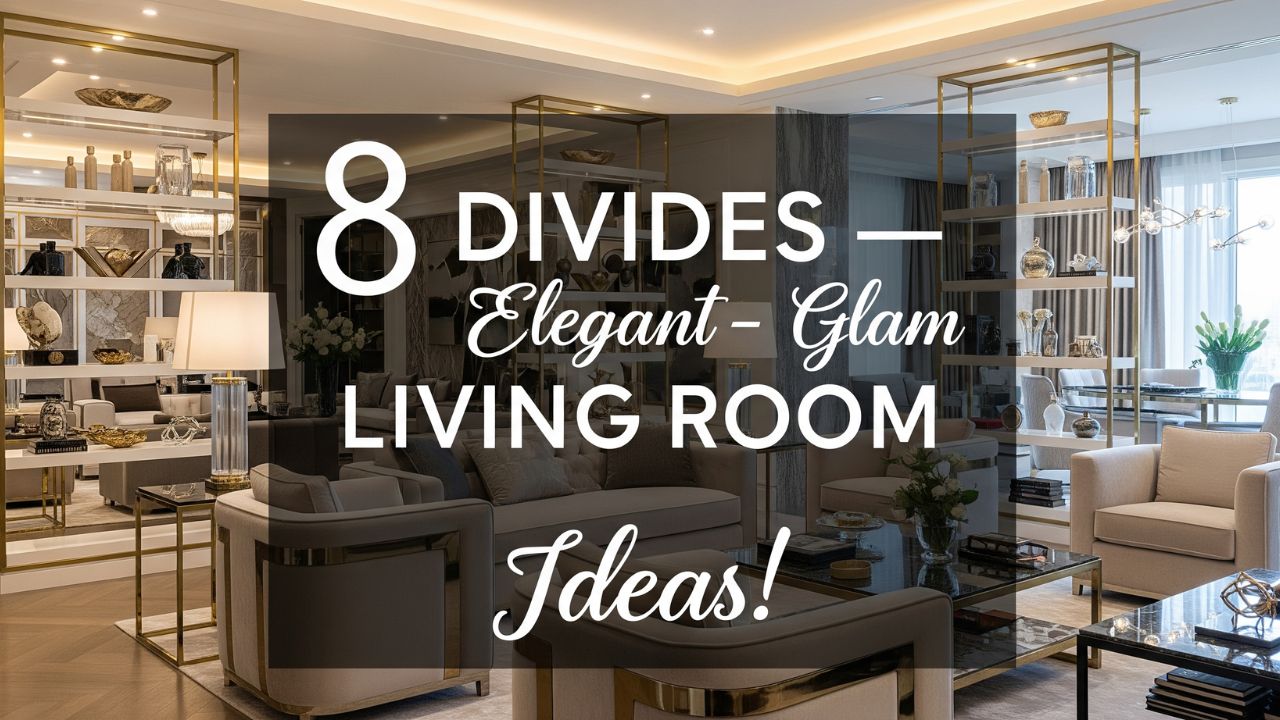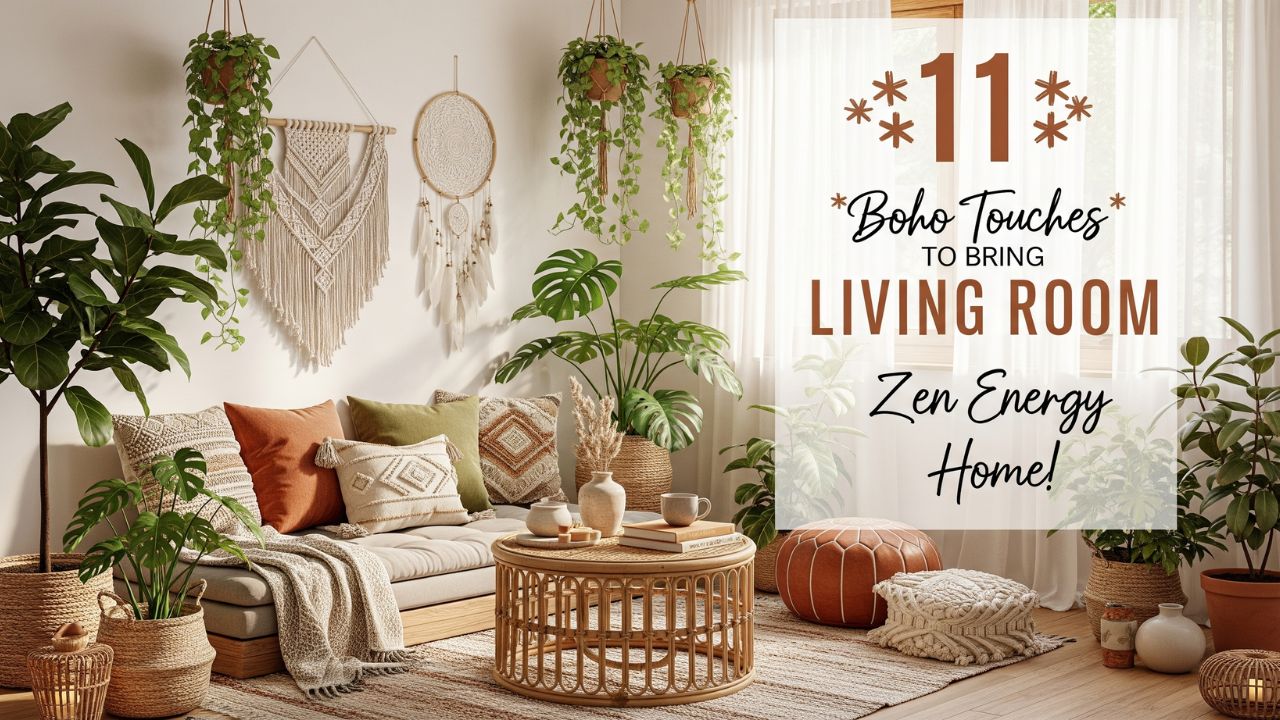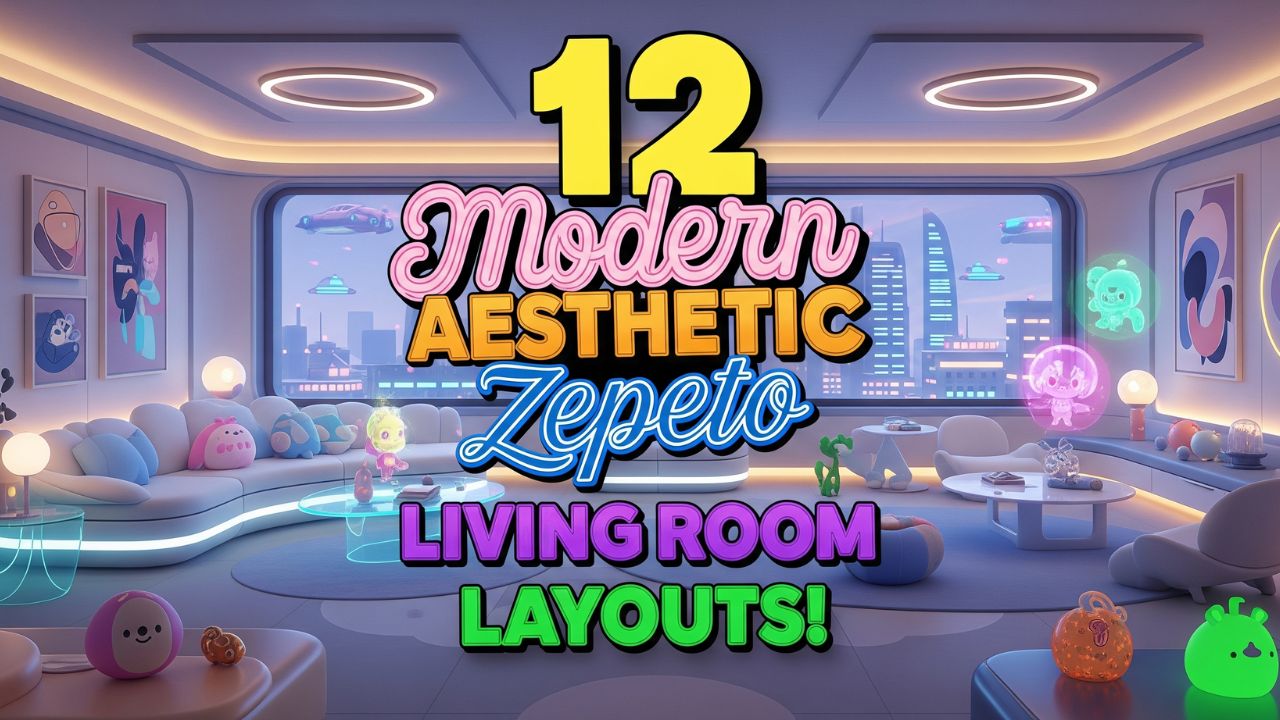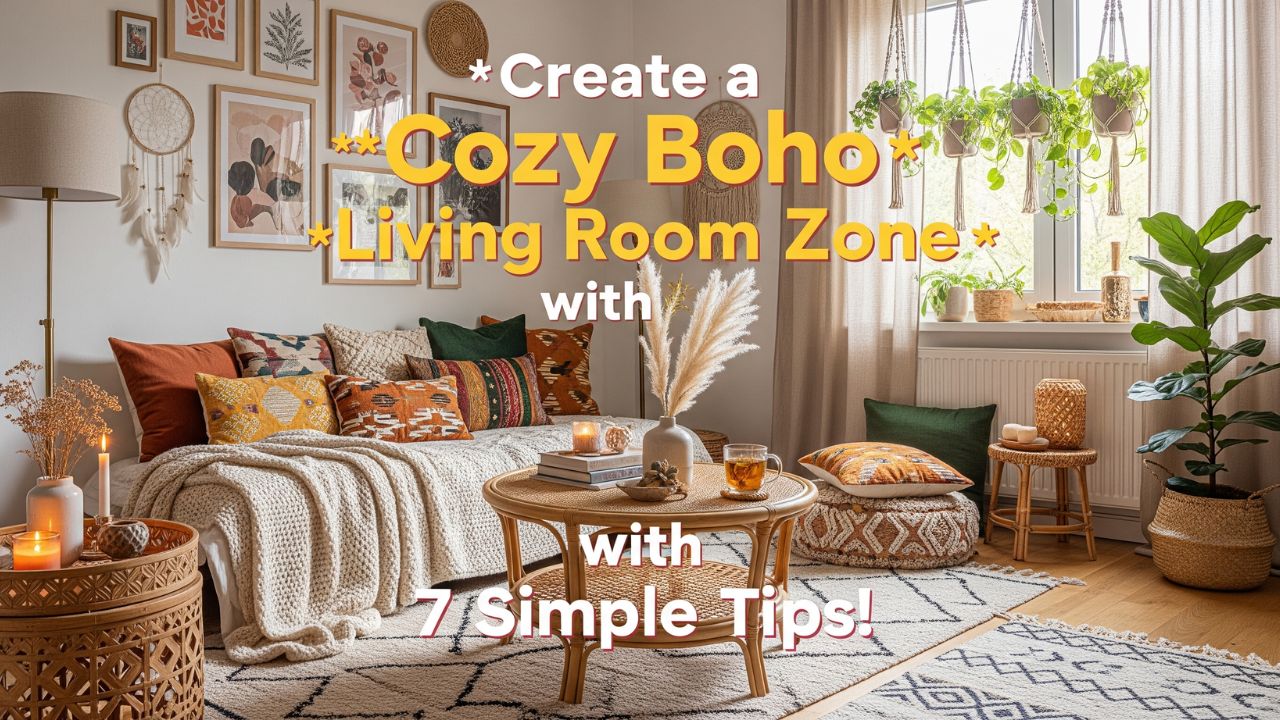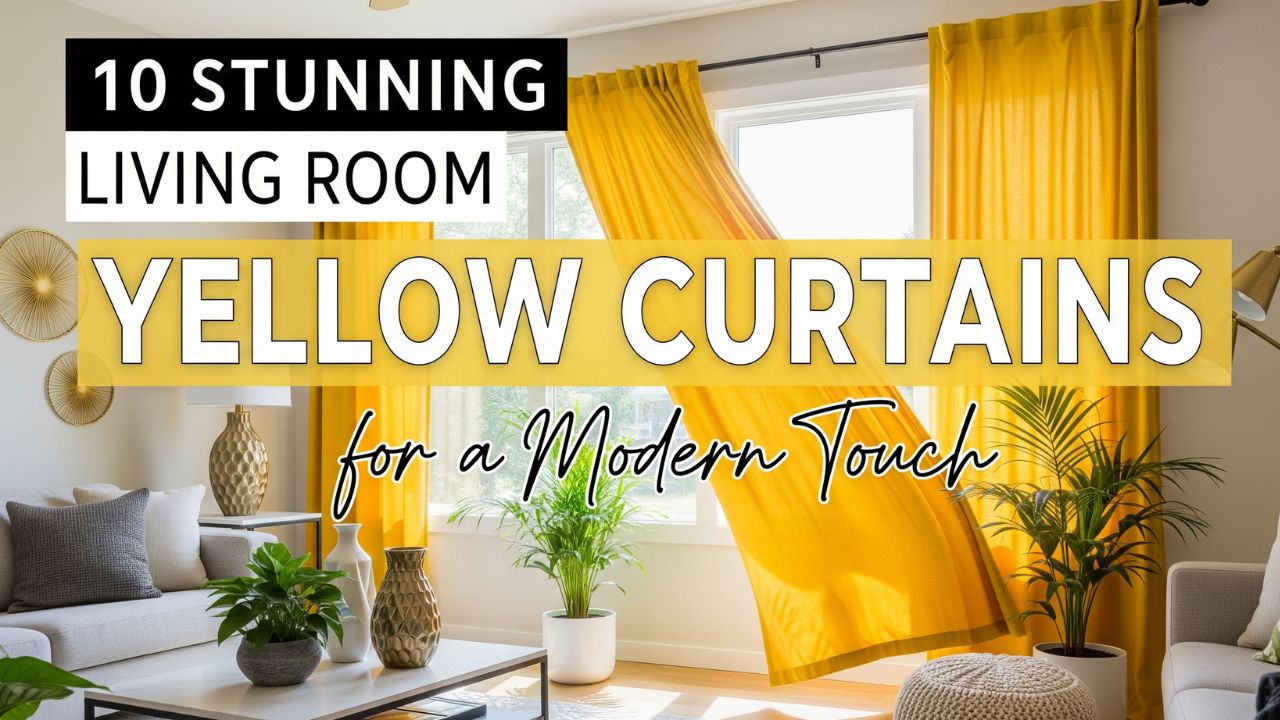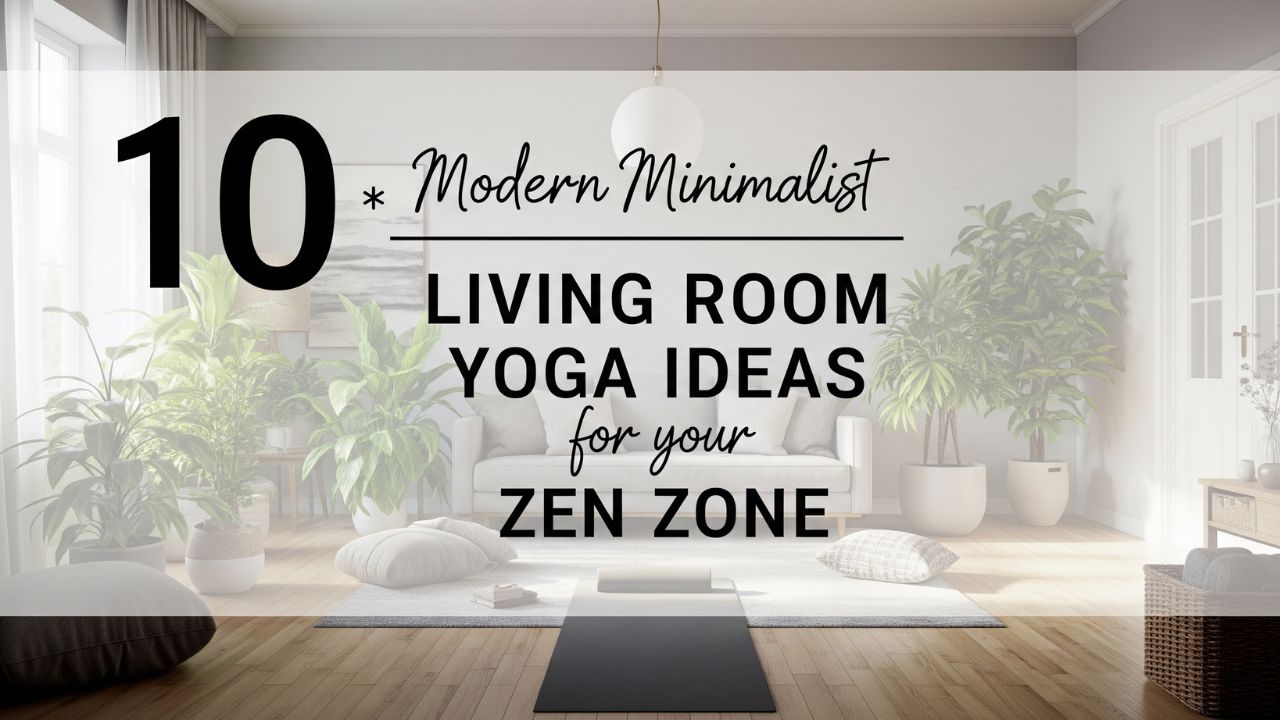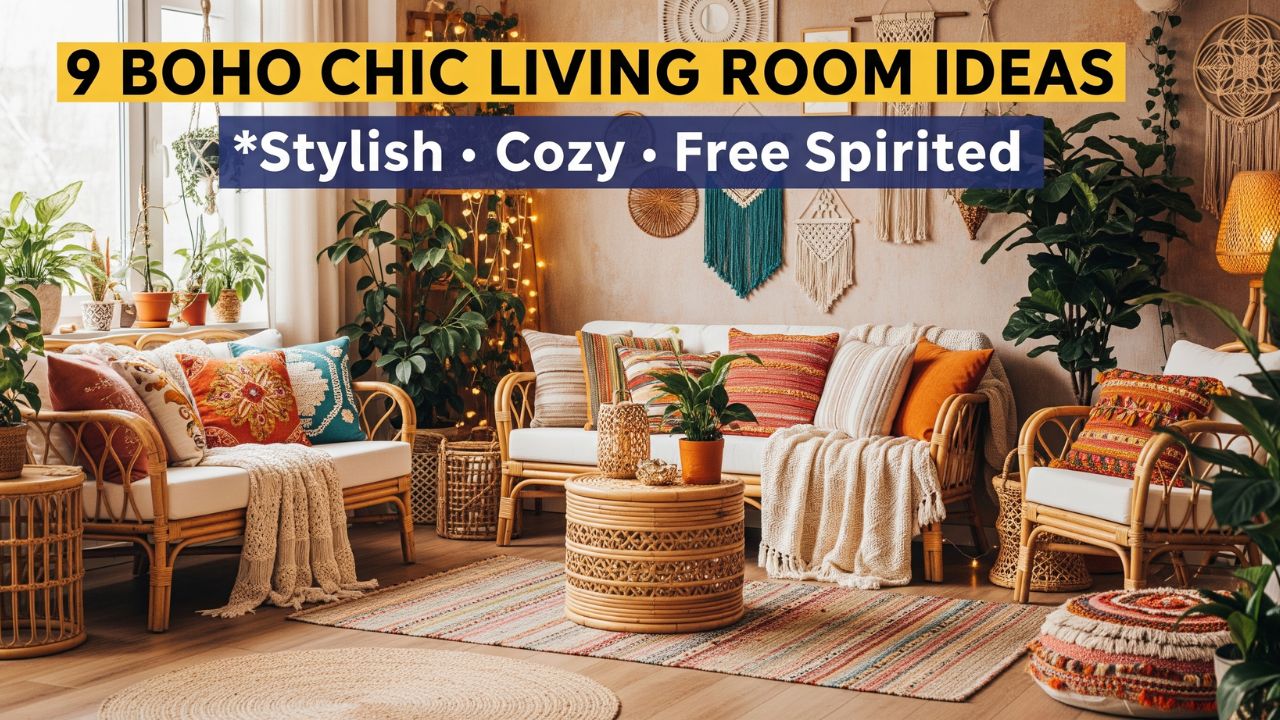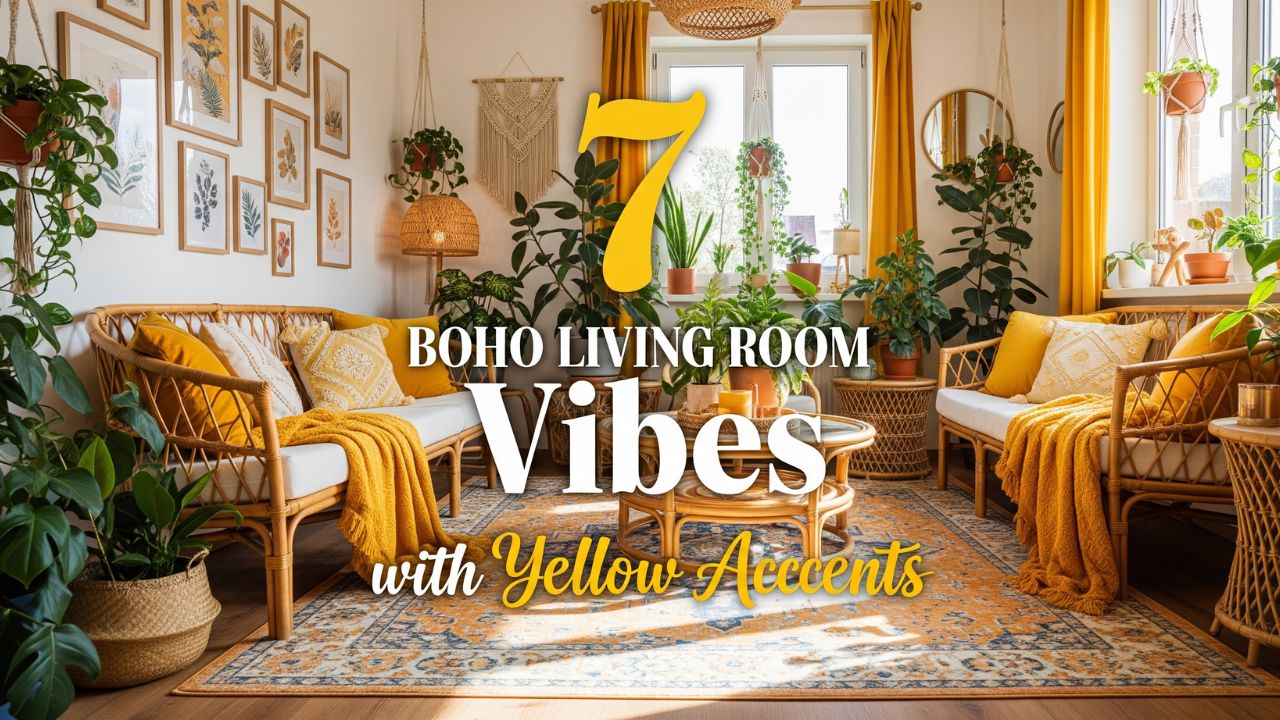Imagine stepping into a living room bathed in sunshine—where every corner seems alive, vibrant, and undeniably bold. A yellow living space doesn’t just offer colour—it offers attitude. The kind of attitude that says: “I am here. I am vivid. I am full of personality.” That’s exactly the promise behind “13 Eclectic Living Room Yellow Designs That Burst with Personality.”
If you’ve ever hesitated about using yellow—wondering if it’s too much, too bright, or simply too unconventional—you’re in the right place. Because yellow is no longer just a daring accent; it’s a mood, a statement, and a powerful tool in eclectic design. In fact, colour specialists say yellow “has the power to warm up a cool space and to enhance natural light.”
Let’s explore 13 unique living-room ideas where yellow takes centre stage—each with its own twist, its own voice, and the kind of boldness that makes the space unmistakably “you.”
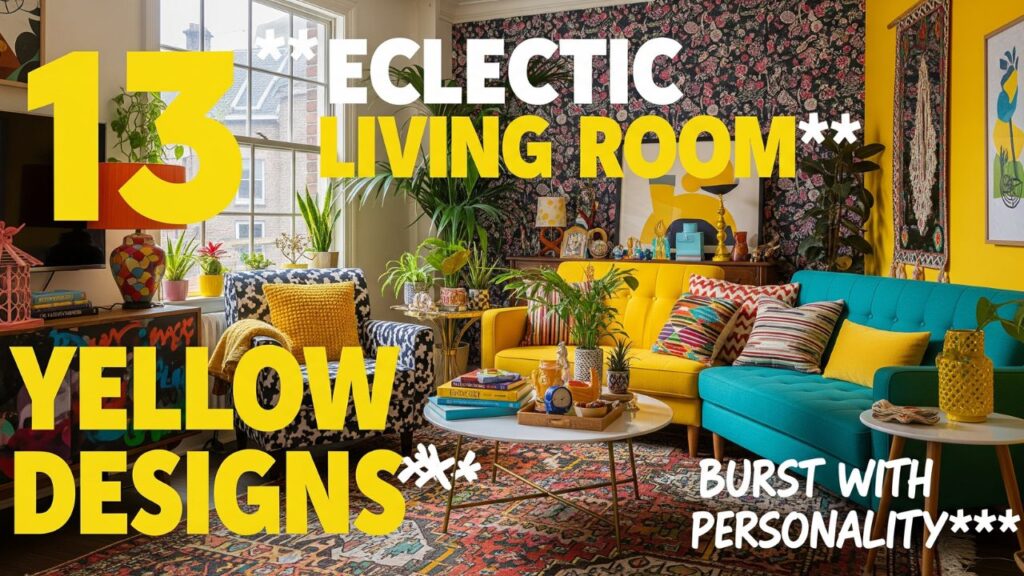
Table of Contents
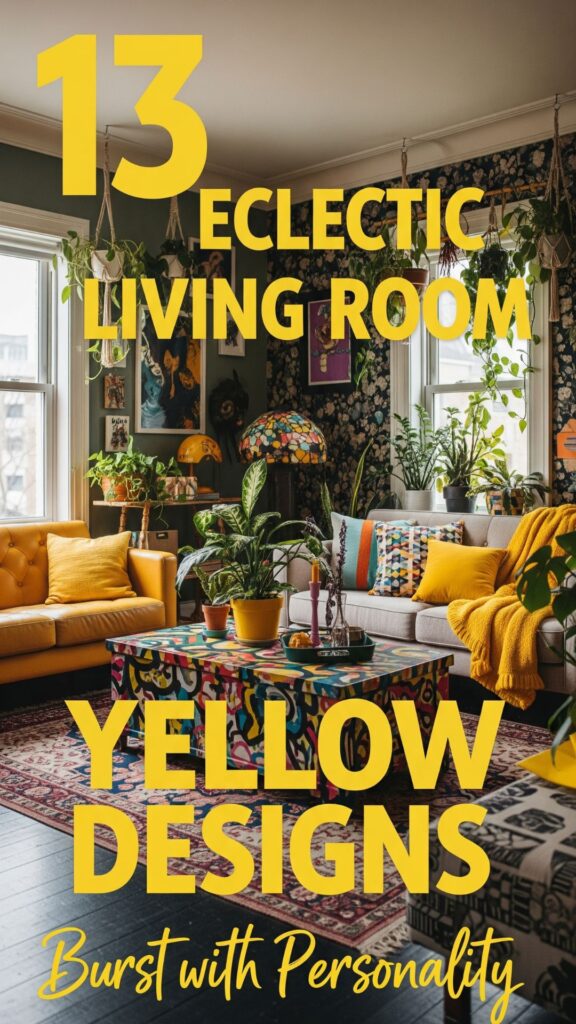
13 Eclectic Living Room Yellow Designs
1. Mustard & Mid-Century Fuse
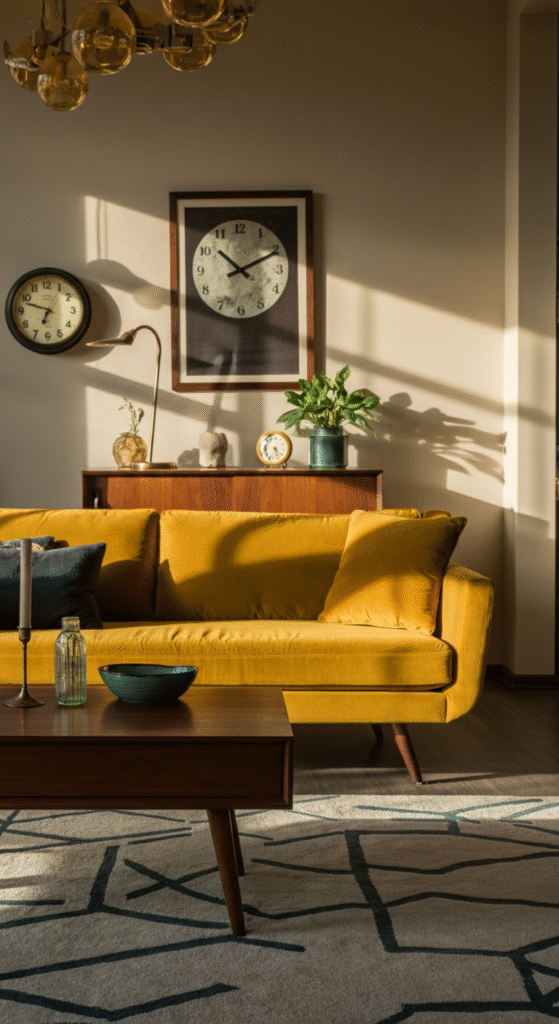
A deep mustard-yellow sofa paired with clean, mid-century furniture sets the tone for a retro-chic living room. Think walnut wood legs, tapered arms, and geometric side tables. The rich hue of mustard provides warmth and grounding—especially when accessorised with creams and dark woods.
Do you know? Mustard yellow is part of the earth-tone palette that’s resurged in modern interiors because it offers both vintage character and understated sophistication.
Why it works:
- The saturated shade anchors the space without leaning neon.
- Mid-century furniture keeps the aesthetic crisp and structured.
- Add a plush rug in a complementary tone (olive green or charcoal) to balance.
- Keep accent décor minimal so the yellow remains the star.
2. Lemon Zest Accent Wall + Neutral Backdrop
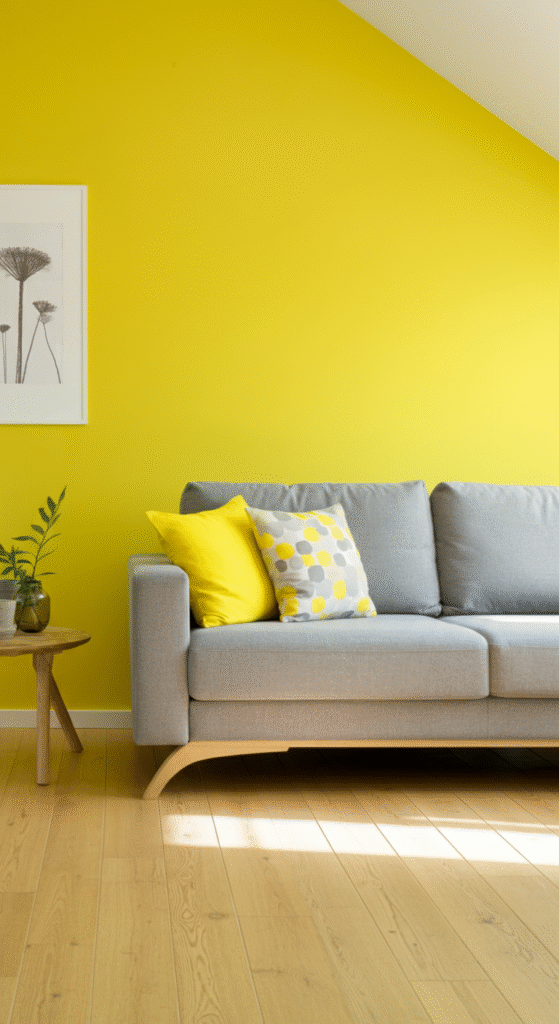
If you’re unsure about fully committing to yellow, one smart move is painting a single accent wall in a vibrant lemon-yellow while keeping other walls neutral (soft white or warm grey). This allows the yellow to pop without overwhelming the room.
Interesting fact: Designers often suggest starting with accents if you’re wary of making a full commitment.
Why it works:
- The accent wall immediately draws attention, creating a focal point.
- The yellow energises the room; the neutrals tone it down.
- It’s a flexible choice—subsequently you can layer in yellow furniture or décor.
- Works especially well in rooms that may not get a lot of natural light: yellow helps bring brightness in.
3. Yellow Sofa with Eclectic Patterns
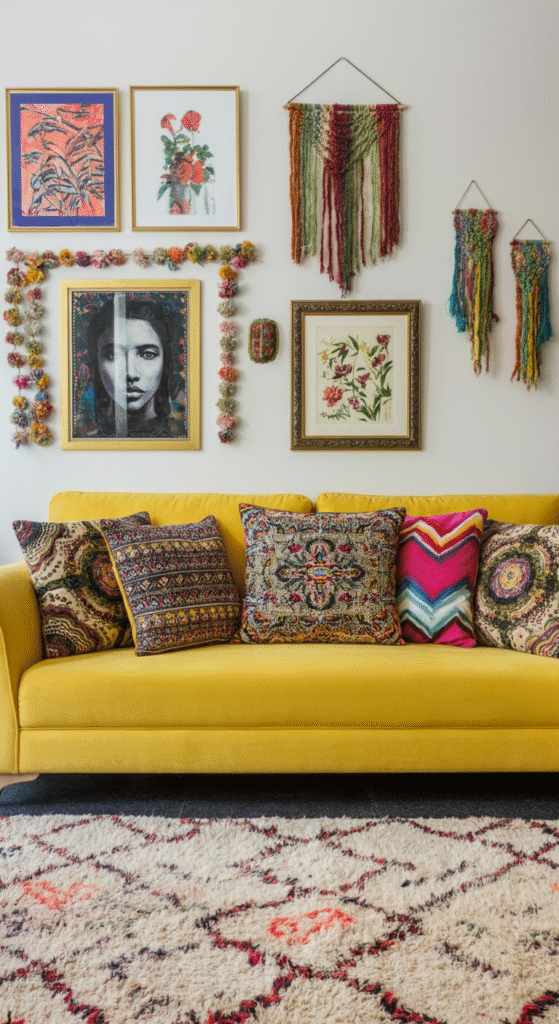
Replace the predictable neutral couch with a yellow upholstered sofa. Then go wild (in a good way) with patterned cushions, throws, and even wall-art. The key is that the sofa becomes the canvas for eclectic layering.
Why it works:
- Yellow as a large piece makes a bold statement right away.
- Patterns and textures (think Moroccan rugs, tribal throws, bold prints) amplify the eclectic feel.
- Let the sofa’s tone anchor the room; other colours don’t have to fight to be heard.
- Use a neutral rug or side tables to keep the space grounded.
4. Mustard Curtains & Natural Wood Elements
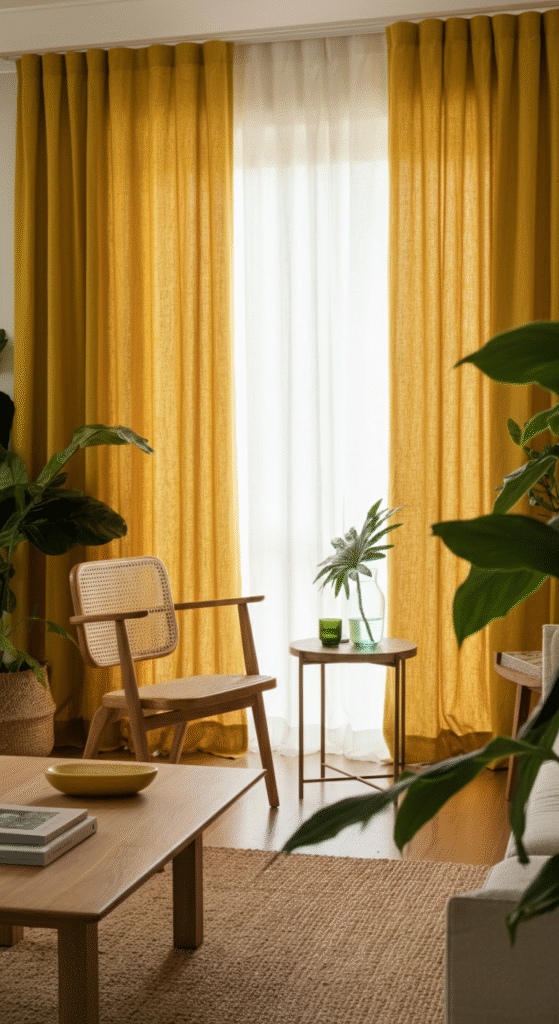
Wall colour stays neutral—but the curtains are mustard yellow. Combine this with natural wood furniture (teak or oak) and perhaps rattan or cane accents for a relaxed yet rich look.
Myth-buster: Some think yellow “accelerates eye fatigue” because of brightness; while early research found yellow can be challenging for the eye. But when used in balanced amounts (like for curtains), it becomes refreshing, not overwhelming.
Why it works:
- Vertical flow: curtains draw the eye upwards.
- The combination of natural wood + mustard feels grounded and earthy.
- You can easily swap curtain fabric later if you want a new look—versus repainting walls.
- Works beautifully in rooms with good daylight, as the yellow curtain will glow when sunlight filters through.
5. Soft Butter Yellow Walls for Elegance
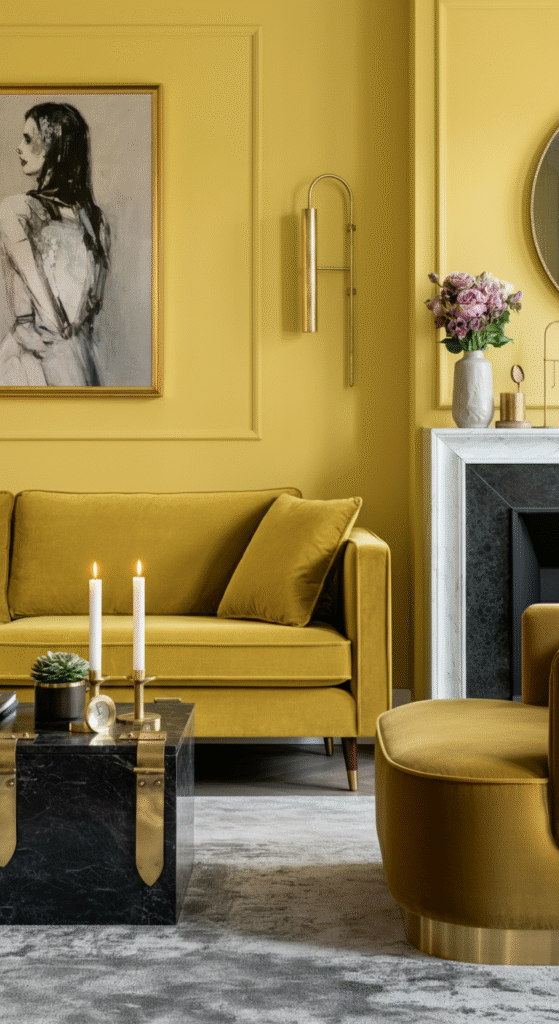
Opt for a more subtle shade of yellow—think butter, cream-yellow, or pastel lemon—and apply it to the walls. Pair with refined furniture (vellum upholstery, gold or brass accents, marble or glass tables) for an elegant eclectic look.
Fact: Butter yellow has been called “the most 2025 way to decorate a living room” by design trend watchers.
Why it works:
- The soft tone gives warmth without being brash.
- Elegant materials (brass, marble) elevate the design.
- The room feels inviting and lounge-worthy rather than just energetic.
- Great for larger living rooms where a full yellow wall can still feel calm.
6. Yellow + Blue Contrast Play
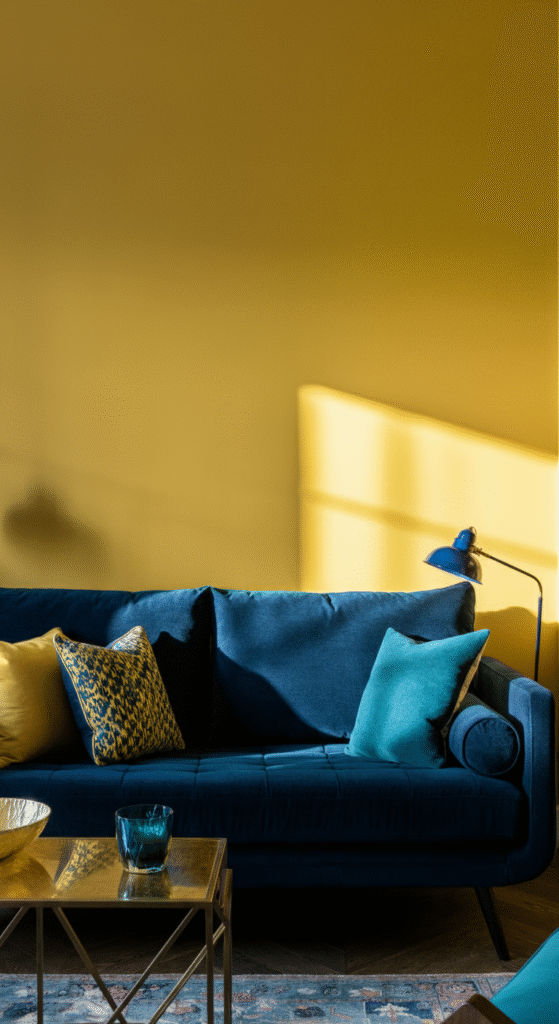
Yellow and blue have long been complementary pairing in interiors. Use a golden-yellow wall or sofa and pair it with deep navy or sky-blue accents (pillows, vases, side-chairs) for a dynamic look.
Why it works:
- The contrast enhances both colours—yellow glows brighter, blue becomes richer.
- Works well in eclectic spaces where you love colour but still crave balance.
- Use blue in smaller quantities so it doesn’t overpower the yellow.
- For extra warmth, introduce touches of wood and greenery.
7. Mustard Textiles Amid Earthy Minimalism
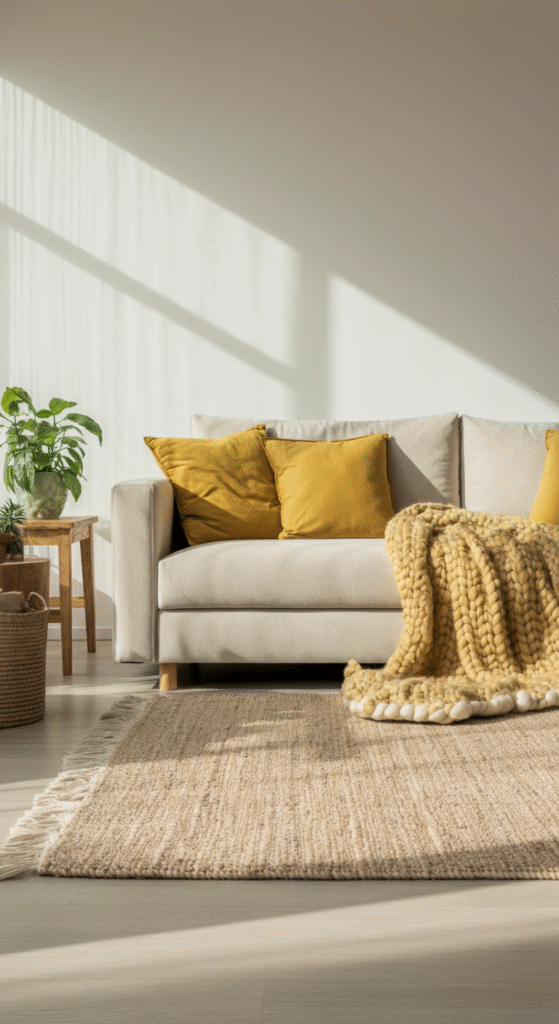
An alternative approach: keep the overall furniture minimal—neutral sofa, clean lines—but introduce mustard cushions, throws, even a rug. The colour then becomes a subtle punch of character.
Why it works:
- This is perhaps the easiest entry point for yellow lovers.
- No major painting or furniture overhaul needed.
- Works in smaller living rooms where bold colour might feel too “much.”
- Eclectic personality is still present through pattern or texture rather than colour volume.
8. Eclectic Mix of Vintage & Modern in Yellow
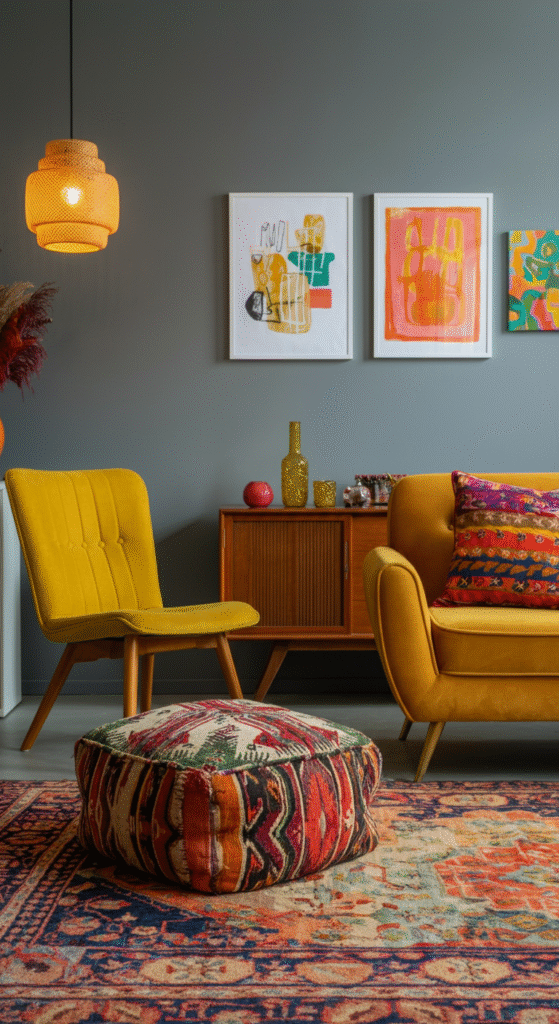
Go full eclectic: combine a vintage mustard chair, a modern yellow pendant light, colourful artwork, a patterned rug—layering styles and eras. Yellow unites the mix.
Do you know? When designers face risk of mismatched styles, a unifying colour like yellow can bring coherence.
Why it works:
- The yellow element becomes the thread connecting disparate pieces.
- You don’t need matchy-matchy furniture—just a shared colour anchor.
- The living room feels curated, intentional, and lived-in (not showroom-sterile).
- Use metallic accents (brass, copper) for added warmth and texture.
9. Bold Yellow Walls with Monochrome Accents
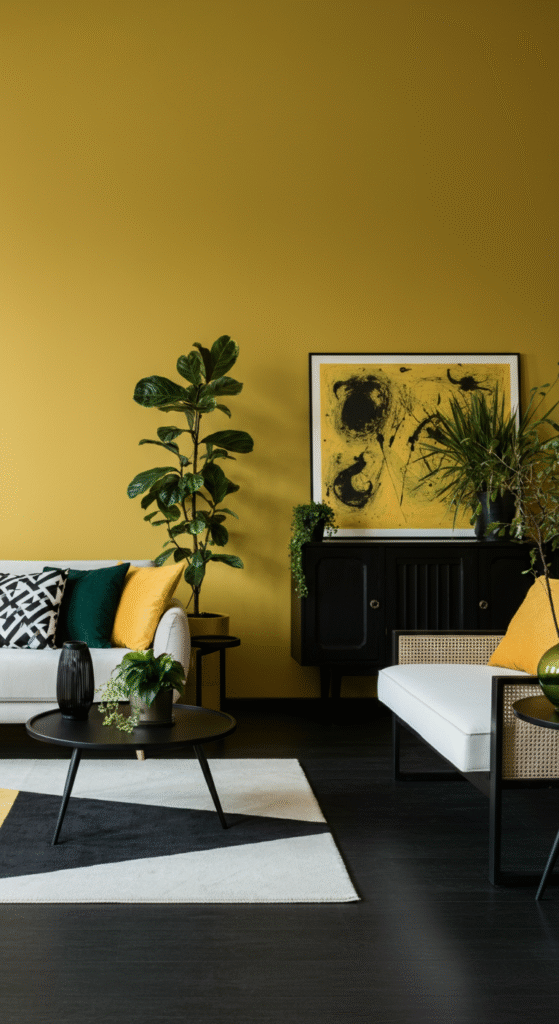
For the daring: paint most walls in a saturated yellow (sunny or golden) and then offset with black, white, or charcoal elements—picture black framed artwork, white sofas, graphic rugs.
Why it works:
- The monochrome palette allows the yellow to dominate yet remain elegant.
- Creates high visual drama in an eclectic way.
- Works best in rooms with ample space and light—otherwise the boldness may feel too closed-in.
- Keep furnishings simple so the bold colour doesn’t clash with too many competing textures.
10. Yellow Upholstered Furniture in a Neutral Room
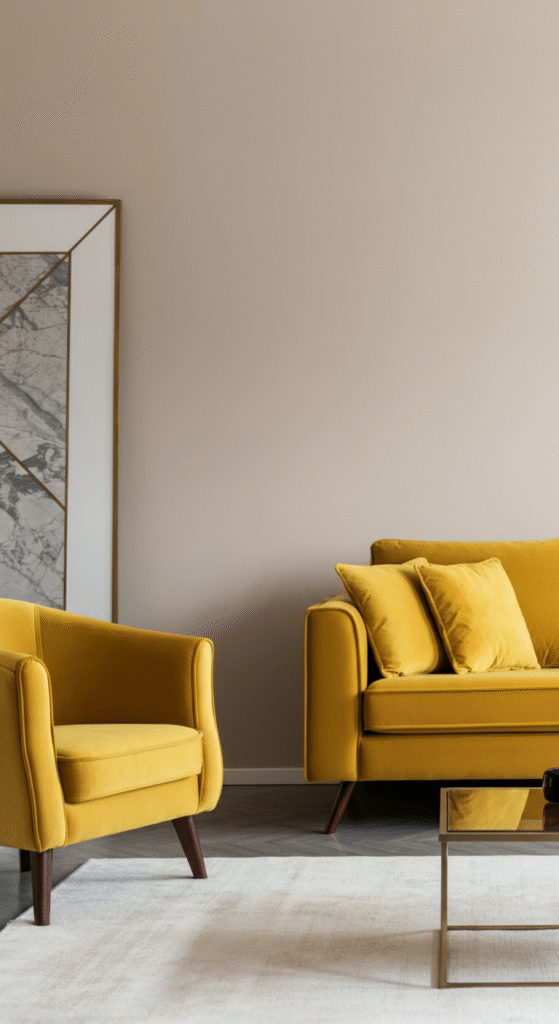
Instead of painting walls, choose a yellow armchair or velvet yellow couch in a room that maintains neutral walls and flooring. Let the furniture piece carry the personality.
Why it works:
- Furniture is easier to change in future than wall colour.
- The yellow piece becomes a statement, perhaps even the conversation piece.
- You can build around it with complementary accessories (a gold side-table, greens, wood).
- Works well in smaller rooms where full yellow walls risk being overwhelming.
11. Layered Textures in Yellow Tones
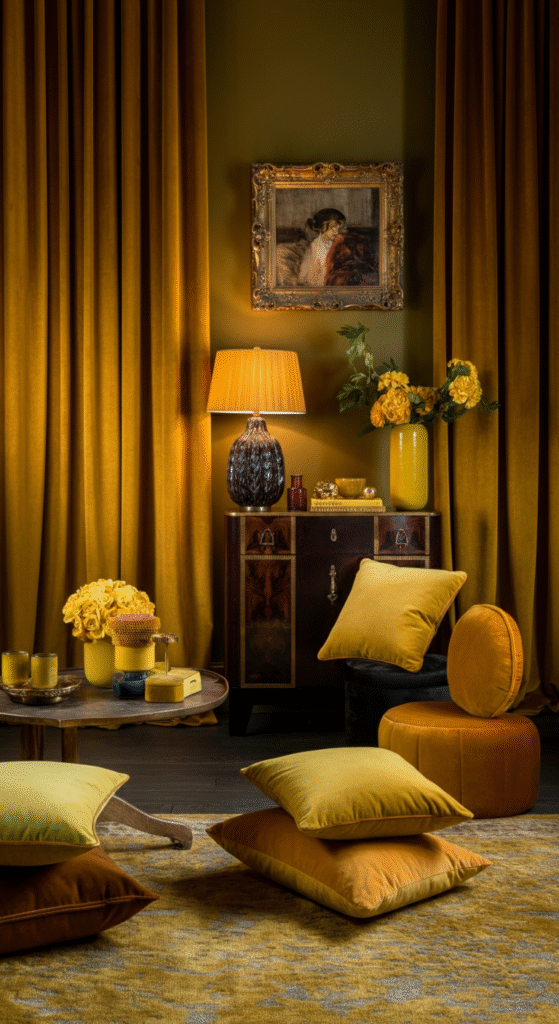
Yellow doesn’t have to be flat. Use textiles and finishes: mustard velvet cushions, butter-yellow wool rug, ochre curtains, gold-leaf frames. Texture gives depth and richness, especially in eclectic interiors.
Fact: Texture and finish amplify colour perception—glossy or lacquered yellow walls can “make the shade pack a punch.”
Why it works:
- Creates visual interest without needing many colours.
- The interplay of textures (velvet, wool, metallic) feels luxe and curated.
- Suitable for eclectic spaces where mixing is the ethos.
- Consider plants and greenery to balance the yellow and add organic softness.
12. Yellow & Green Botanical Eclecticism
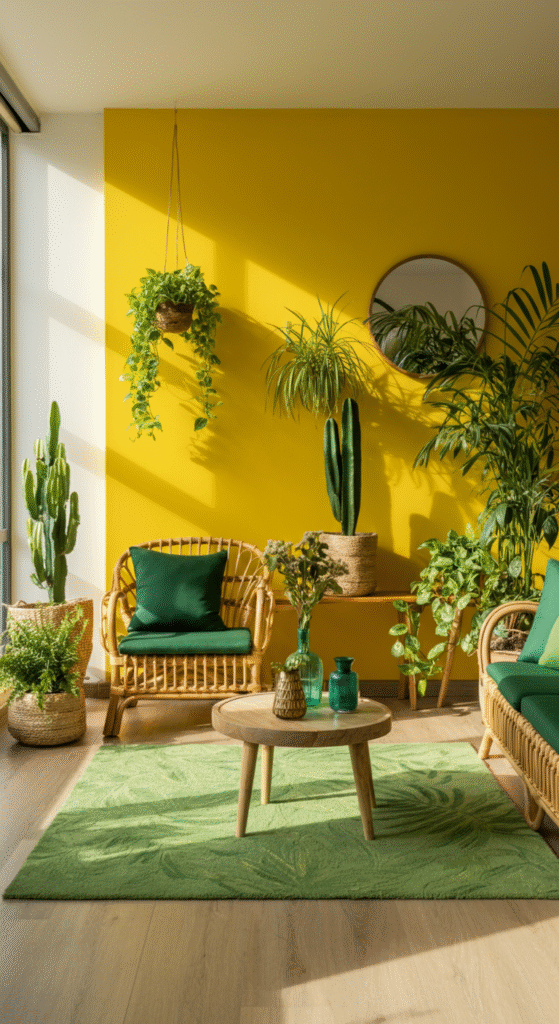
Take your yellow and pair with lush greenery and green-toned accents. A yellow backdrop accentuates green leaves beautifully, and the combination evokes a natural, fresh aesthetic.
Why it works:
- Green is beside yellow on the colour wheel (analogous colour pairing) so the harmony creates calm yet vibrant energy.
- The plants add life to the space and keep it from feeling static.
- Choose furnishings in wood or rattan for added earthiness.
- Ideal for homeowners who love plants and want their décor to feel lively and organic.
13. Cultural & Artistic Yellow Touches for Bold Eclecticism
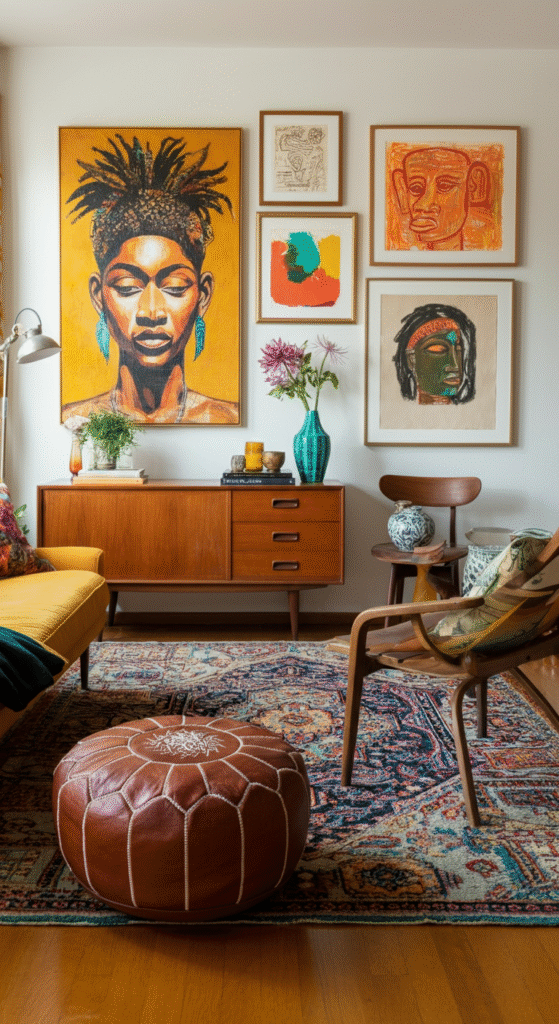
Finally, for spaces with personality: incorporate global artefacts—Moroccan rugs with yellow motifs, Indian block-print cushions, African tribal art with yellow accents. Use yellow as the cultural thread tying diverse pieces together.
Why it works:
- Eclectic means mixture—mix materials, styles, origins—and yellow becomes the anchor.
- World-travel pieces often include yellow; using them gives authenticity and story to the room.
- You can keep walls neutral or add subtle yellow in trim or paneling, while the textiles and art tell the tale.
- This approach is perfect for creating a living room full of personality, heritage and visual richness.
Conclusion
Yellow has long been underestimated in living-room design, seen by some as too risky or flamboyant. But as we’ve explored through these 13 eclectic ideas, yellow isn’t just “a colour” — it’s a mood, a character, a bold friend.
Whether you go full saturated walls, mustard accents, patterned layering, or cultured eclecticism, yellow can inject vibrancy, warmth, and unique personality into your space.
Let your living room reflect you—not just in furniture layout or décor pieces, but in colour. If you’d like help narrowing down which of these 13 styles fits your space (size, lighting, furniture-existing) I’d be glad to work through it with you. Choose yellow. Choose bold. Choose a space that doesn’t just sit there—but sings.
Frequently Asked Questions (FAQs)
Why is yellow popular in eclectic living rooms?
Yellow adds warmth, vibrancy, and instant personality. It complements the mix-and-match nature of eclectic décor and helps tie diverse design elements together.
Which shade of yellow suits living rooms best?
Mustard, butter yellow, and golden tones work well. These shades feel sophisticated and are easier to pair with other colours than overly bright lemons.
Can yellow work in small living rooms?
Yes. Use softer tones like pastel yellow or keep yellow to accents—curtains, cushions, or one feature wall—to avoid overwhelming the space.
What colours pair best with yellow in eclectic designs?
Yellow pairs beautifully with blue, green, grey, and even black-and-white monochrome. These combinations balance its warmth with contrast or calmness.
How can I add yellow without repainting walls?
Opt for textiles—cushions, rugs, throws—or a statement yellow sofa or chair. You can also use art, lamps, or curtains in yellow hues.
